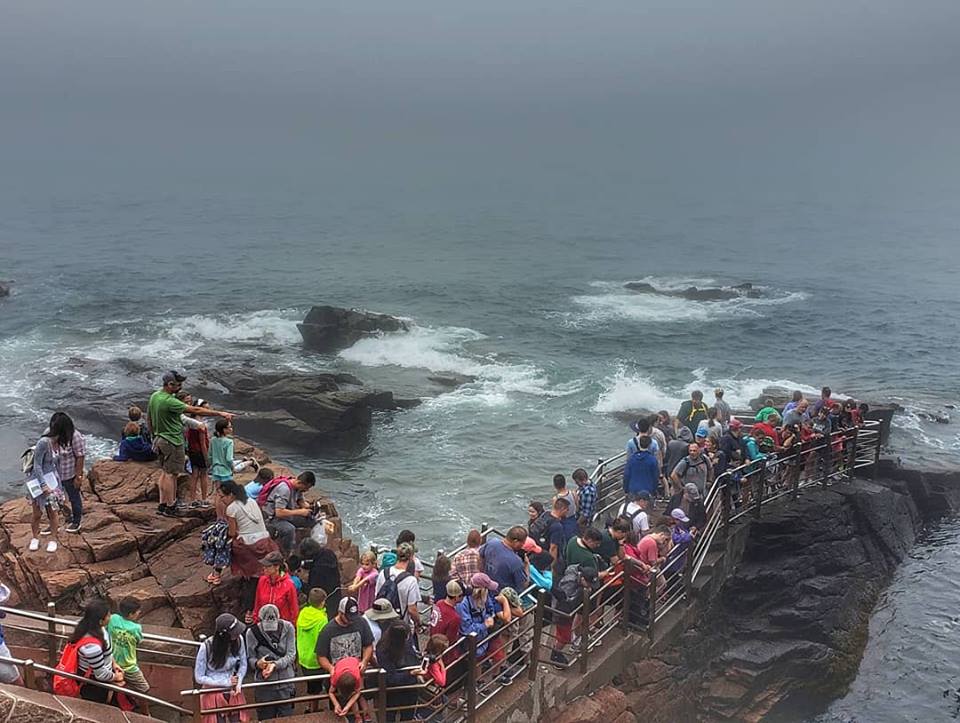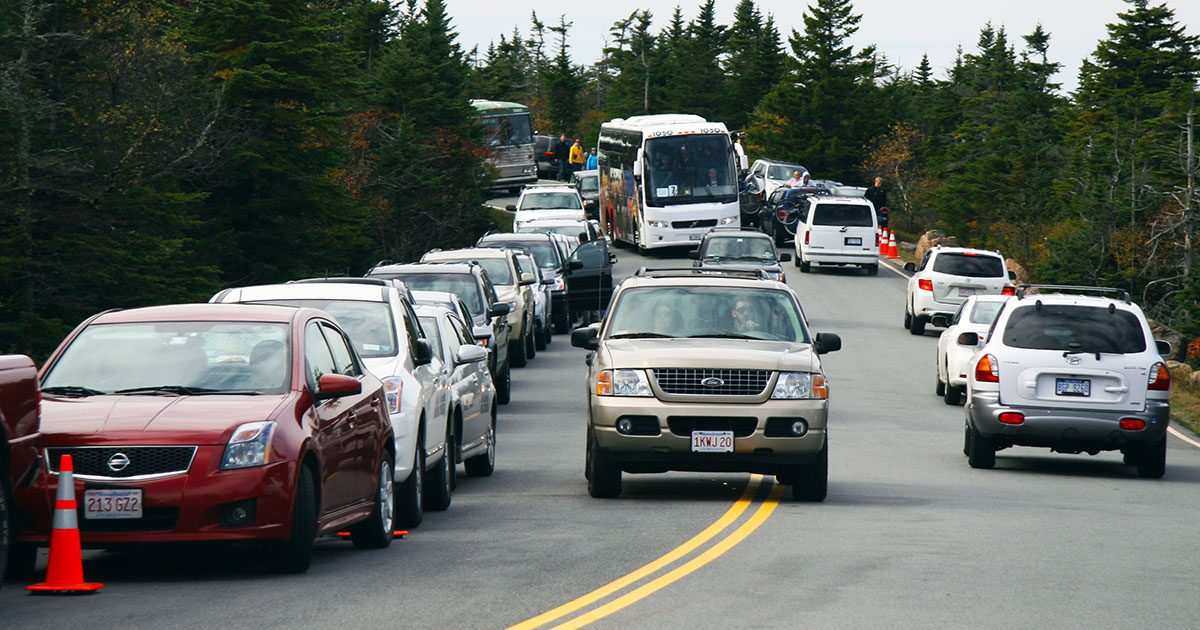Overtourism, a new term for a growing global phenomenon, captures how popular destinations can become overrun and degraded, diminishing both visitor experiences and residents’ quality of life.
It’s a challenging dynamic to address due to its incremental impacts, observes Earl Brechlin, communications director at the nonprofit Friends of Acadia in Bar Harbor. “When you’re in the midst of it, you don’t realize it until it’s too late.”
Acadia National Park already has an estimated 3.5 million visits each year, causing parking problems and temporary road closures because of congestion. The National Park Service anticipates that over the next four decades, visitation could reach levels 140 percent higher than those seen between 1979 and 2013.
The park recently released a transportation plan designed to better manage vehicular traffic by relocating parking areas, increasing its shuttle bus service and instituting a “timed-entry reservation system” at its most popular attractions. Those measures will only alleviate congestion temporarily, Brechlin expects, as long as Acadia’s “mandate is to accommodate the visitors.”
Tourism always involves a balance and “has to be good for the community and good for visitors,” says Christopher Fogg, chief executive officer of the Maine Tourism Association.
Yet in a growing number of destinations worldwide, that balance is gone. Fed up with congestion, noise, waste and tourists’ disregard for local needs and customs, residents of numerous European cities organized protests in 2017 and 2018.
Bar Harbor residents have yet to take to the streets, but that might be because no space remains there. In addition to hosting millions of park visitors, the town of 5,200 people contends with daily influxes of up to 5,500 passengers from cruise ships, with 177 ships scheduled to visit this season.
Jill Goldthwait, a retired nurse and former state senator from Bar Harbor, laments the decline in her community’s “livability” due to increased traffic congestion, long lines at restaurants and movie theaters, and – starting this season – parking meters. She no longer feels safe biking in the busy season, and even walking can be challenging, she says, on “sidewalks really crowded with people, carrying ice cream cones that are sort of weaponized.”
“We’re at carrying capacity,” acknowledges Michele Gagnon, who recently began work as Bar Harbor’s planning director.
The throngs of visitors clogging Maine’s sidewalks and roadways this time of year do provide communities an undeniable economic boost. Tourism supports roughly one in six Maine jobs and generates tax revenues that topped half-billion dollars in 2017, the Maine Office of Tourism reports.
Residents may rely on that income, but remain wary of a tipping point into overtourism that might only appear in hindsight. Many municipal leaders in Hancock and Washington counties voice a desire to lure more tourists, says Ron Beard, a Bar Harbor resident and emeritus faculty member at University of Maine Cooperative Extension, yet always with the caveat “but we don’t want to be like Bar Harbor.”

Part of what they fear – beyond congestion – is overtourism’s capacity to erode the health and vitality of the year-round community and to displace residents. Mount Desert Island has had affordable housing challenges for more than two decades, but online vacation rental services like Airbnb and Vrbo have greatly exacerbated the problem.
Gagnon estimates that Bar Harbor has 900 short-term rental units (some of them legally registered only recently), exceeding the 797 units registered in Portland. Many of the town’s rental units belong to non-residents who purchased them expressly for seasonal rentals.
Some year-round residents vacate their own homes temporarily as they depend on income from short-term rentals to meet expenses. Other community members have left the island after being displaced when year-round rentals were converted to vacation rentals. “It’s a really sad thing when you think about it,” Gagnon says.
In Bar Harbor, 98 percent of the homes sold are no longer attainable for those at the town’s median income, she adds. That undermines the year-round community and can worsen traffic (as many local workers must commute long distances).
Towns aren’t well equipped to tackle the tangle of issues that accompany overtourism and, Beard observes, many parts of Maine have lost their regional planning capacity – with cutbacks in programs and staffing.
That’s a real liability in planning for tourism, notes David Vail, emeritus professor of economics at Bowdoin College. In Maine, he says, stakeholders have to identify and organize themselves regionally, “trying to get around the fact that there’s nothing like coherent county government here.”
The Maine Woods Consortium, one such regional collaboration, is working to create more sustainable tourism opportunities inland while offering the training that entrepreneurs need to run successful recreation and hospitality businesses. The Consortium has received funding and technical support from the Maine Office of Tourism, Vail says, particularly from its destination development specialist, a position established two years ago to help rural communities plan for increased tourism.
Vail would like to see the Office of Tourism accelerate “its evolution from a strictly marketing entity to a developmental entity,” putting new resources toward creating high-quality visitor experiences in less traveled regions.
Beard concurs, calling for an integrated economic development strategy that builds capacity in areas that need growth while providing planning and management help for “problem areas.” In the meantime, overrun communities can consider the sort of local measures Vail proposed in an op-ed last fall — such as regulating short-term rentals and creating off-site parking and shuttle services.
More fundamentally, observes Tracy Michaud, assistant professor of tourism and hospitality at the University of Southern Maine, the industry needs to undergo a major shift toward sustainability. The central question, she says, is “how do we manage tourism instead of just marketing it?”







